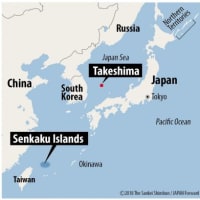


In recent years, there has been a gradual rise in concern about the sustainability of the existing business models of regional banks that support local economies.
One of the reasons for this is that the profitability of the core business of many regional banks has been stagnant in recent years due to the prolonged ultra-low interest rate environment and the slowdown in demand for funds resulting from a declining and aging population and a decrease in the number of companies.
In addition, the business environment for regional banks is expected to undergo dramatic changes in the future as a result of the rapid development of technological innovation symbolized by FinTech, the rise of the sharing economy, the entry of companies from other industries into the financial industry, and changes in economic and social structures such as the aging of existing customers.
In this context, The Daiwa Institute of Research published an article titled "Current Status and Issues of Alliances among Regional Banks" in its "Daiwa Institute of Research Quarterly, New Year 2022 (Vol. 45)."
This time, I would like to introduce it to you.
For detailed information and your assurance, please read the original text below.
https://www.dir.co.jp/publicity/publication/chousakiho2201.html
Daiwa Institute of Research Quarterly, New Year 2022 (Vol. 45)
Alliances (business and capital alliances) in the regional banking industry are now in full swing, as the government's measures to restructure regional banks have begun to work.
Alliances can be categorized into business and capital alliances between regional banks, and business and capital alliances with major banks, securities companies, and other financial platforms.
The purpose of these alliances is to increase gross operating profit and improve the cost to income ratio by reducing operating expenses.
Increasing gross business profit includes diversification strategies such as entry into regional businesses outside the core business.
On the other hand, it seems that investors are demanding the establishment of an evaluation axis for alliances.
The axis of evaluation will be whether or not the company can improve its consolidated return on risk assets (RORA), which is highly correlated with consolidated ROE, in the future.
Even if a diversification strategy is adopted, the level of return will remain low even if regional risk assets are accumulated while maintaining the current level of soundness.
In order to avoid this, it will be necessary to dig deeper into the diverse needs of the region and actively commit to regional risks.
The fate of the business model of Japan's commercial banks will depend on whether they can link their alliances to strengthening the management base of the regional banking industry as a whole and rebuilding the customer bases of individual banks through more careful, thoughtful marketing to local customers.
That’s all for now. Thank you for your visit and interest.



















